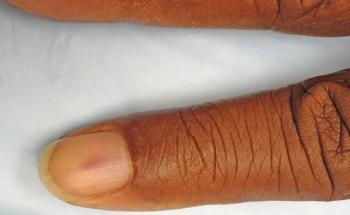
Finger disorders may be caused by an injury or may result from another disorder, and it’s often hard to tell what happened. This week’s photo quiz tests your ability to recognize a variety of common problems.

Finger disorders may be caused by an injury or may result from another disorder, and it’s often hard to tell what happened. This week’s photo quiz tests your ability to recognize a variety of common problems.

Chicken pox? Lupus? Impetigo? Your dx?
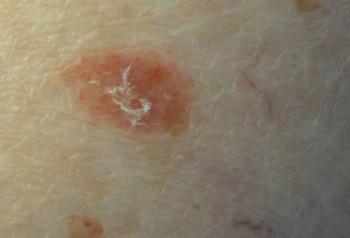
Rash, lumps, and bumps; extra GI IBD; and smoking: can you answer these 5 questions?

Rashes, like children, come in all shapes and sizes, and they have a variety of causes, ranging from infection to allergic reaction. This week’s photo quiz tests your knowledge of skin conditions in younger patients.

Is the nail dystrophy secondary to trauma, or something else?

This week's quiz questions challenge you to dive below the skin’s surface to come up with the correct answers.

Sebaceous hyperplasia are commonly mistaken for basal cell carcinoma. These small papules with a yellowish hue and central dell is typical of the former, for which no treatment is required.
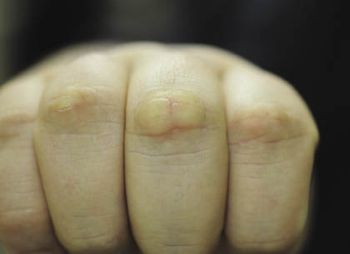
Chalk these lesions up to trauma?

This week’s questions cover a range of disorders-from infectious disease to GI problems, to HIV/AIDS. See how well you do . . .
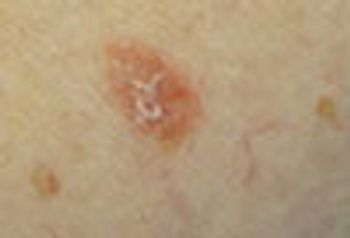
Biopsy of this red, scaly patch showed in situ squamous cell carcinoma. Treatment consisted of once-daily topical application of 5% imiquimod until erosion occurred. This off-label treatment affords an excellent cosmetic result.

These small areas of white dyschromia are typical of white superficial onychomycosis, often due to dermatophyte invasion following minor trauma. This form of onychomycosis usually responds well to topical therapy.

This is a prototypical case of acute contact dermatitis to benzoyl peroxide that the patient had been applying for her mild to moderate papulo-pustular acne. Twice-daily application of hydrocortisone 2.5% cream led to prompt resolution of the rash.
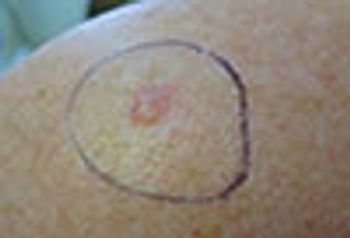
Biopsy of the flat area of this erythematous patch revealed superficial basal cell carcinoma while biopsy of the more nodular component revealed deeply infiltrating basal cell carcinoma.

An asymptomatic bump; IBD and celiac disease; a gradually expanding spot .... test your clinical skills on a range of disorders in this week's quiz.

Add skin health to the list of medical conditions that are affected by poor sleep. Sun protection should be emphasized in skin care.

The eyes may be "windows to the soul," but they also provide a look at your patients’ overall health and clues to specific disorders. This week’s photo essay will test your ability to identify eye-related problems.

What's the best way to dislodge a fishhook? What if there is bony involvement?

This non-tender, freely mobile, rubbery-feeling nodule is a classic lipoma. Diagnostic contenders include epidermal cyst and cutaneous metastases.

Eccentric and irregular pigmentation prompted a biopsy in this elderly woman with a history of basal cell carcinoma and melanoma. The surprising diagnosis was a heavily pigmented squamous cell carcinoma in situ.
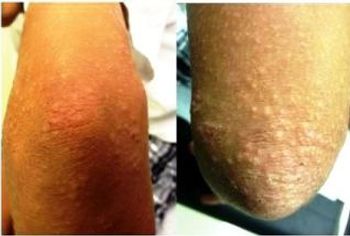
Creatures of all kinds can get under your patients’ skin and cause problems, and the results sometimes are mistaken for other types of lesions. This week’s photo essay will test your ability to identify various kinds of diagnoses.

The puncta, with a black center, clearly identified these as classic epidermal cysts.

Ulcerating ankle; loud snoring; a new onset rash: see if you can answer this week’s 5 quiz questions.
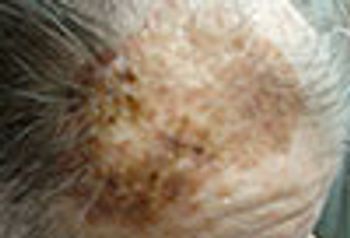
Biopsies of this large variegated pigmented plaque ruled out lentigo maligna melanoma and gigantic seborrheic keratosis.

This translucent dark pink nodule located just behind the nail is the classic presentation of a digital myxoid cyst.

A rapidly developing lesion . . . flashing lights . . . blue sclera: can you answer this week’s 5 quiz questions?